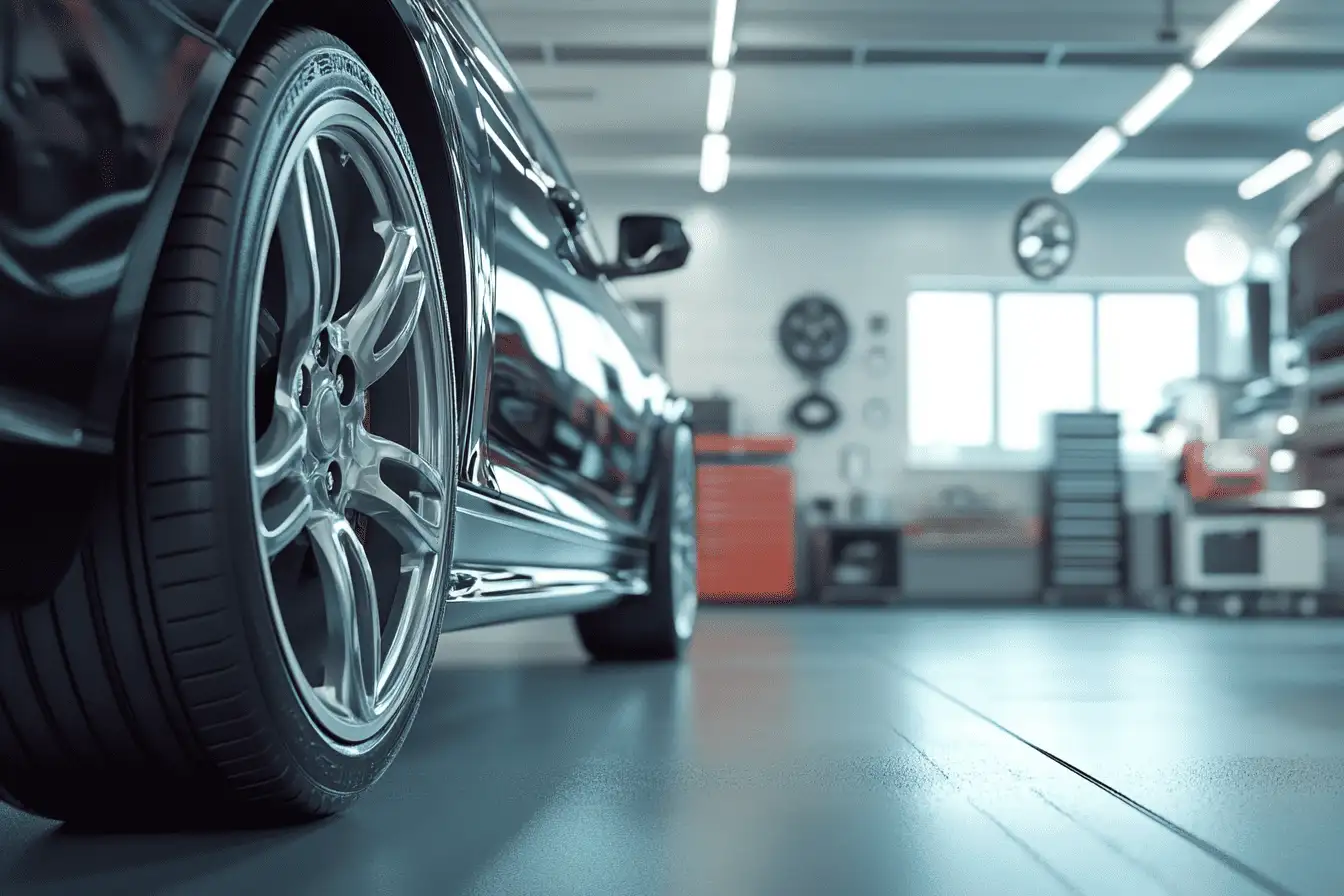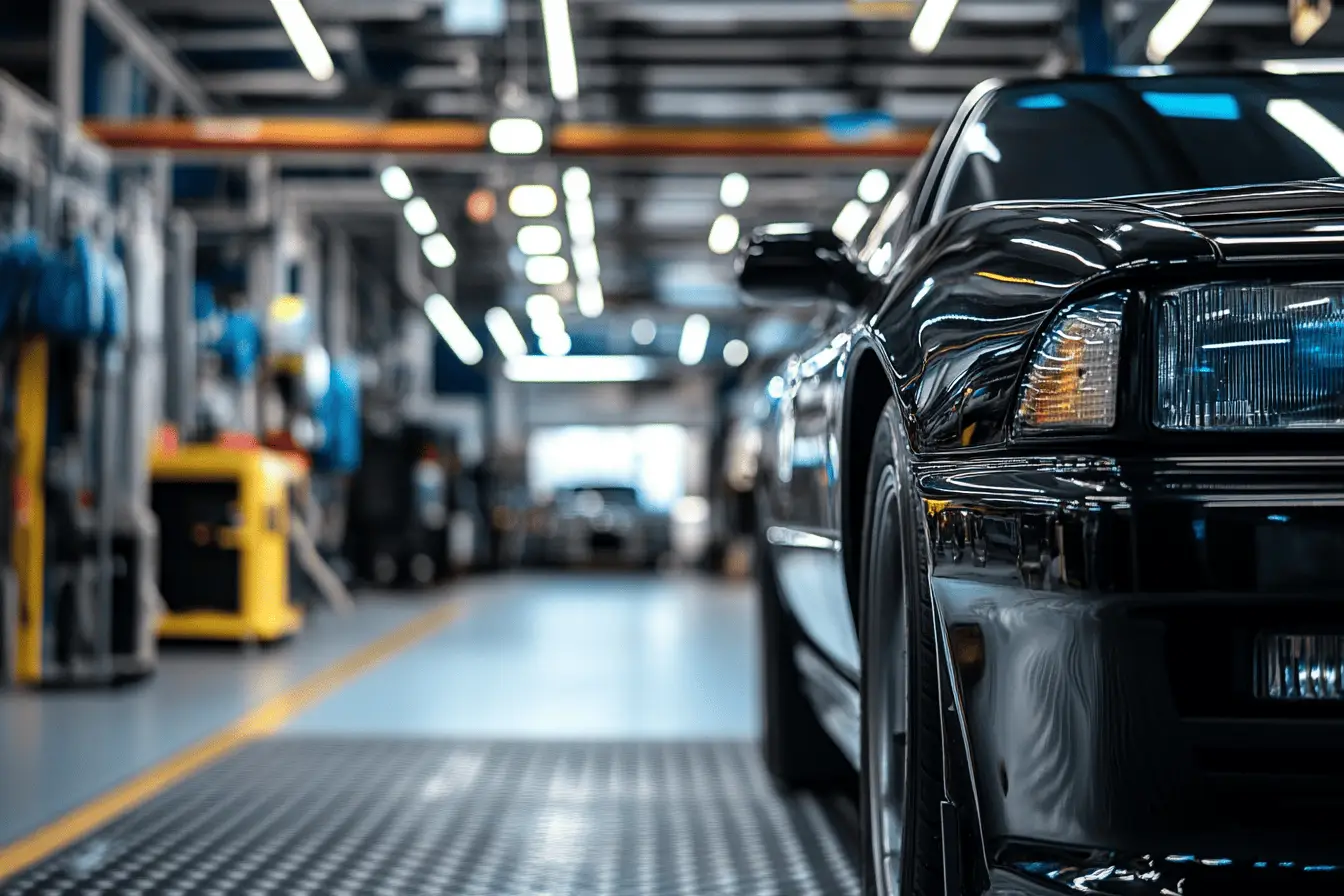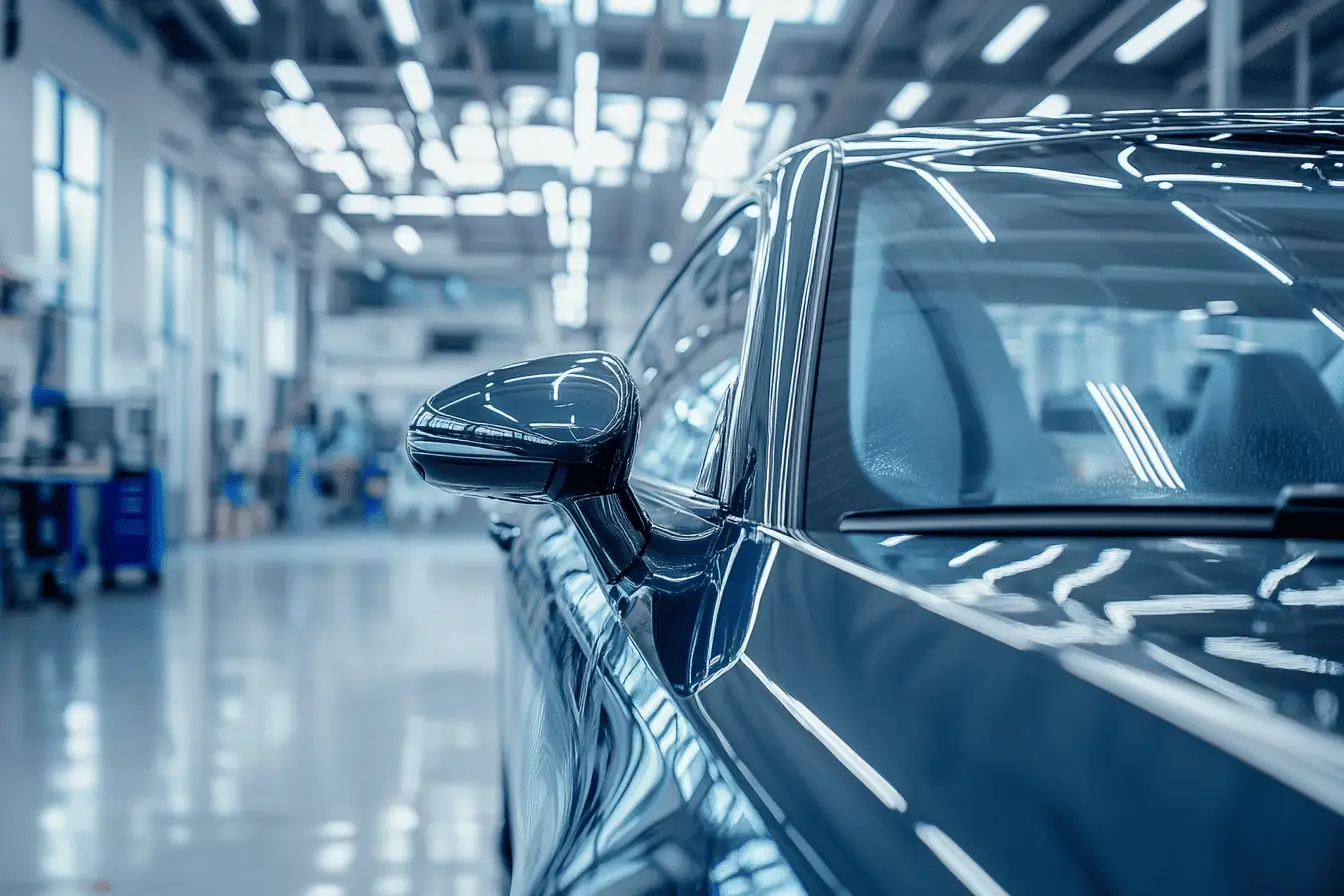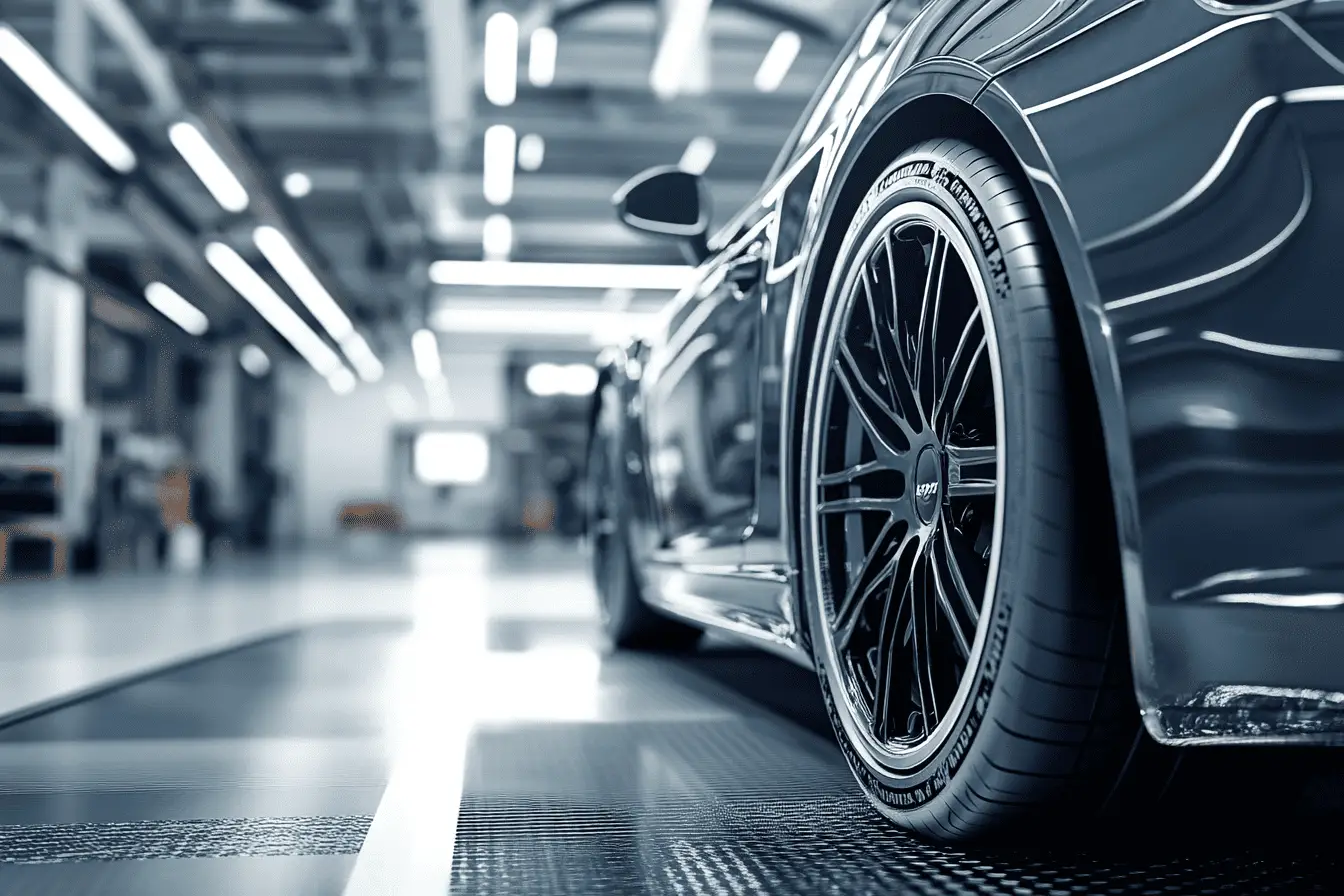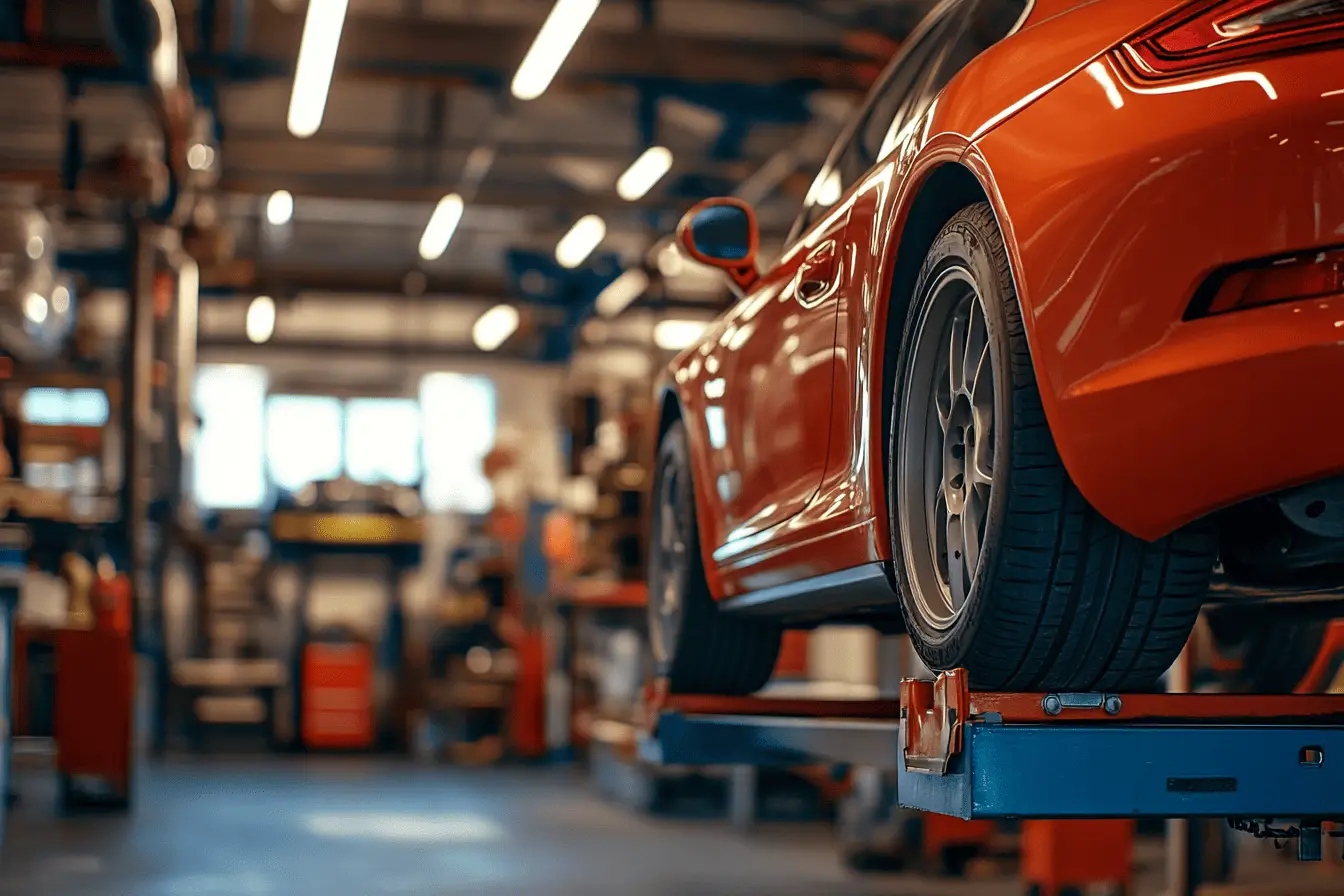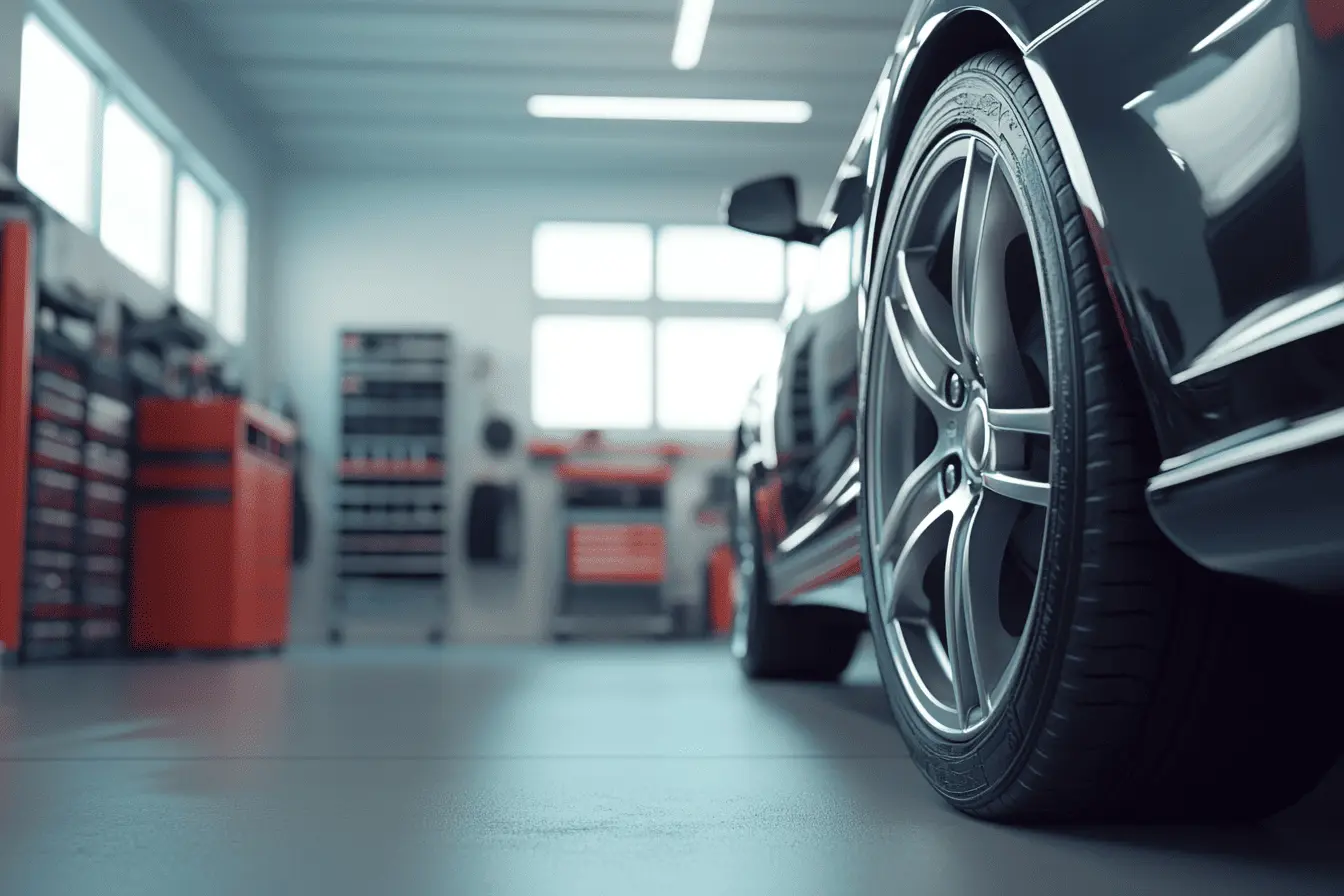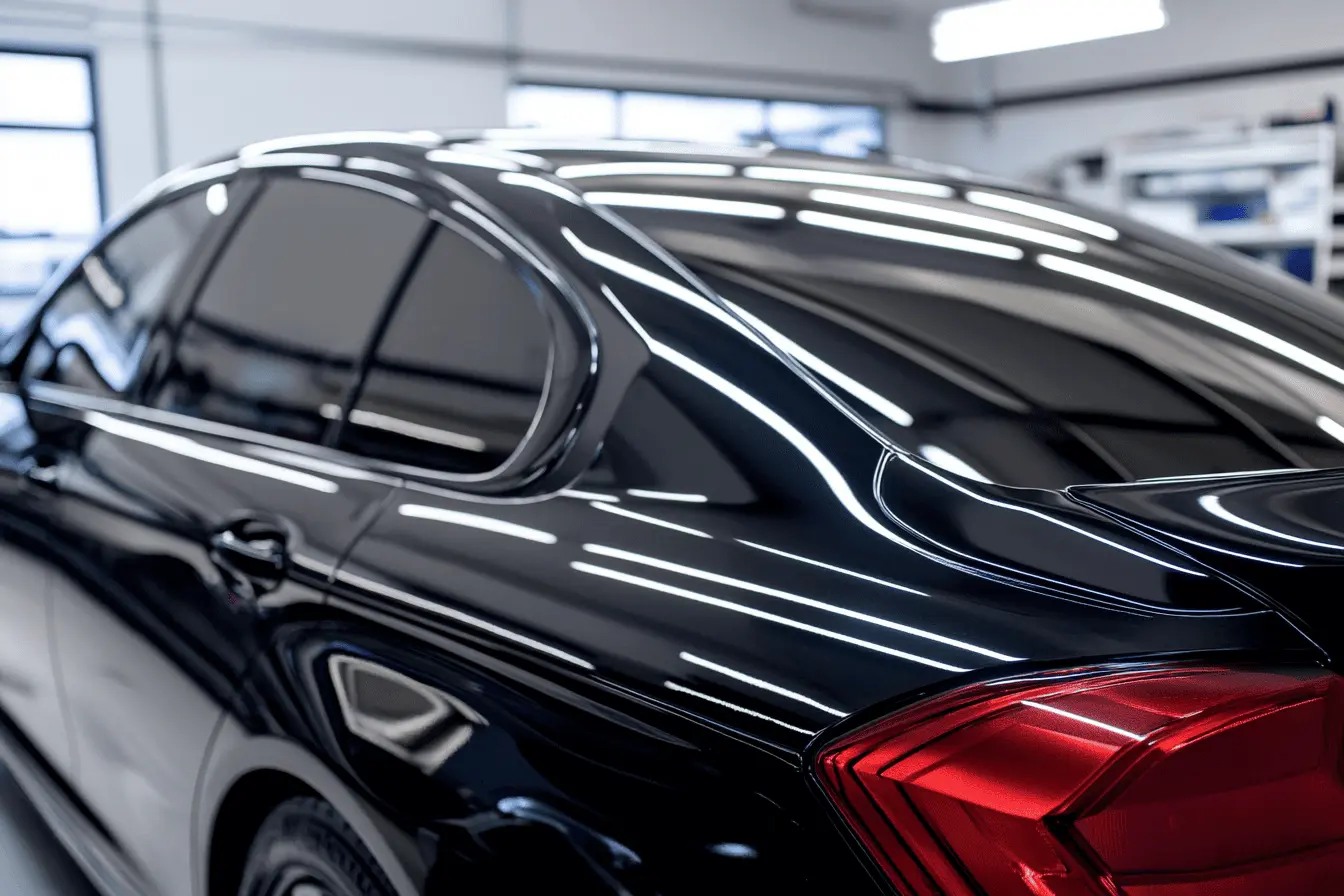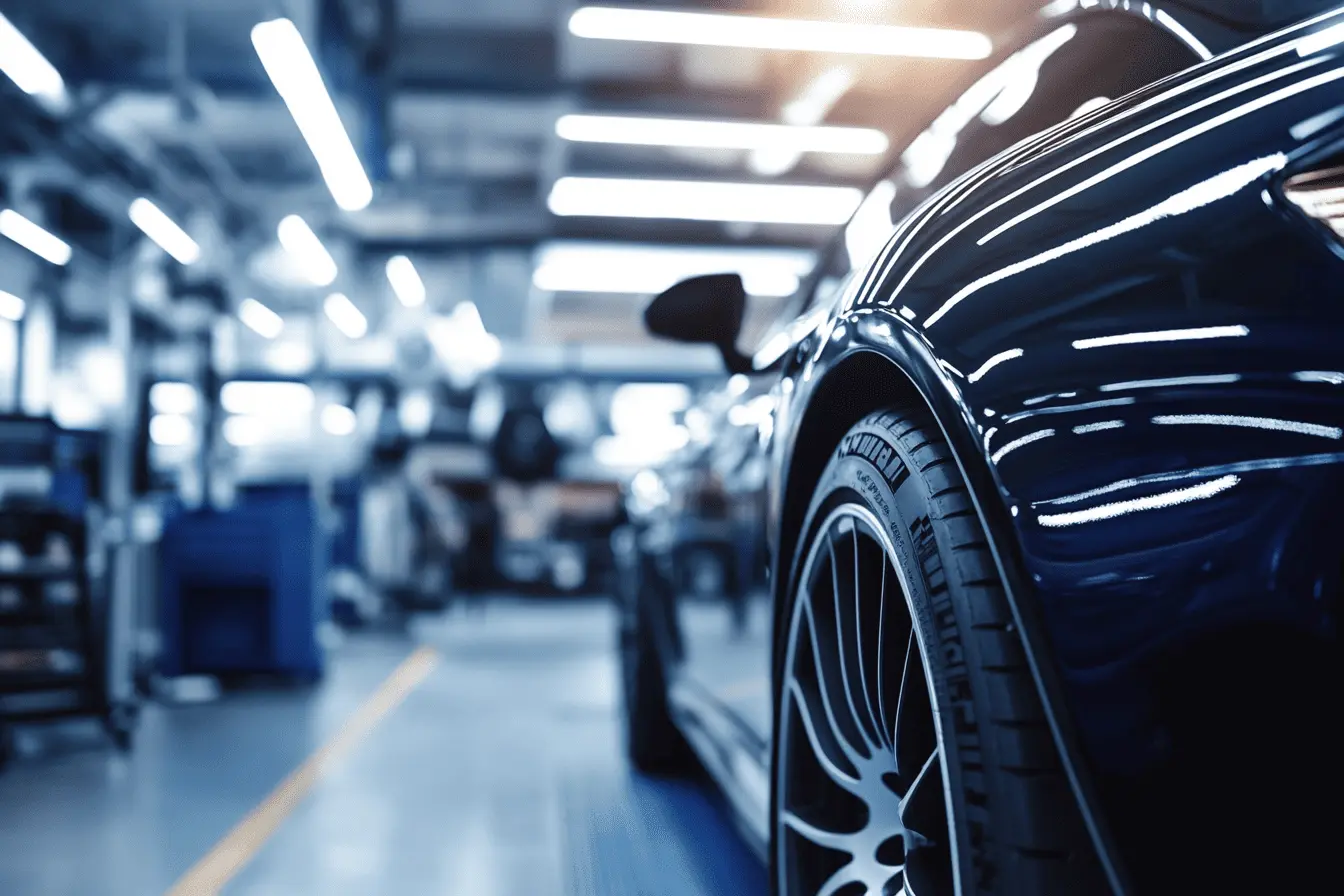
If you notice leaking coolant under your car, a damaged or broken water pump is probably the reason. But what does water pump replacement cost in the UK? And how often does it need to be changed? Plus: The best savings tips for your water pump!
How much does it cost to replace a water pump in the UK?
On average: £250 – £700
The average water pump replacement cost is between £250 – £700 in the UK. The cost of water pump, gaskets and coolant is around £70 – £250, with the bulk of the cost being labour costs, which are around £180 – £450 (at an average hourly rate of £60 – £150 and 3 hours work). The exact cost of any damage to the water pump will depend on the amount of repair work required.
This depends on the vehicle model, whether it is a mechanical or electric water pump and how it is powered. Also the change is often cheaper in older vehicles, because the individual components are less tightly built into the engine and the water pump can therefore be replaced more quickly.
Additional costs can arise if, in addition to the water pump, the thermostat or the cambelt / alternator belt is to be replaced, which could make sense. Below is an example of the cost of water pump replacement on a Mini One in a car garage in Birmingham:
Water pump replacement · Mini One | |
|---|---|
Overview | Cost |
Water pump, sealing, coolant | £80 – £100 |
Labour cost, 3 hours | £210 – £240 |
Total cost | £290 – £340 |
Get free instant quotes from garages in your area!
Water pump change costs can vary greatly
There can be large price differences between vehicle models. But even with one and the same model the prices can vary. The replacement in older versions of e.g. BMW 1, VW Golf, Mercedes A or Vauxhall Corsa is always somewhat cheaper than with their newer versions. Underneath you can find a list with estimated prices for popular cars in the UK:
Car models | Estimate |
|---|---|
Alfa Romeo Giulietta • Alfa Romeo Mito • Chevrolet Spark • Chevrolet Matiz • Fiat 500 • Fiat Panda • Fiat Punto • Ford Fiesta • Ford Ka • Ford Escort • Hyundai i10 • Hyundai i20 • Kia Ceed • Kia Picanto • Kia Rio • Nissan Micra • Vauxhall Corsa • Vauxhall Meriva • Peugeot 206, 207, 208 • Renault Clio • Renault Twingo • Seat Altea • Seat Ibiza • Smart Fortwo • Toyota Corolla • Toyota Auris • Toyota Yaris • VW Fox • VW Lupo • VW Polo | from £250 |
Audi A1, S1 • Audi A3, S3, RS3 • Citroen Berlingo • Citroen C3 • Citroen C4 • Citroen Jumper • Dacia Duster • Dacia Logan • Dacia Sandero • Ford Kuga • Ford Mondeo • Honda Civic • Honda Jazz • Hyundai Tucson • Kia Sportage • Lexus IS 200 • Mazda CX 5 • Mercedes A • Mazda CX 3 • Mini • Nissan Qashqai • Vauxhall Astra • Vauxhall Mokka • Vauxhall Vectra • Vauxhall Zafira • Peugeot 308, 3008 • Renault Kangoo • Renault Megane • Renault Scenic • Seat Alhambra • Seat Leon • Skoda Fabia • Skoda Octavia • Skoda Roomster • Skoda Superb • Skoda Yeti • Toyota Avensis • Toyota Prius • Volvo V60 • VW Passat • VW Tiguan • VW Golf 4, 5, 6, 7 | from £350 |
Audi A4, S4, RS4 • Audi A5, S5, RS5 • Audi A6, S6, RS6 • Audi Q2 • Audi Q5 • BMW X1 • BMW 1er • BMW 2er • BMW 3er • BMW 5er • Fiat Ducato • Ford Focus • Ford Galaxy • Jaguar XF • Land Rover Freelander • Mercedes B • Mercedes C • Mercedes E • Mercedes GLK, GLC • Vauxhall Insignia • Porsche 911 • Rover 75 • Seat Alhambra • VW Caddy • VW Sharan • VW Touran • VW T5 | from £450 |
All above mentioned prices for the installation of the water pump are standard values including VAT. These may vary depending on the vehicle model and region. Prices in and around large cities are usually higher than in more rural areas. The highest prices are in London. Here the costs can be up to 20% higher, even compared to other UK cities. A free price comparison is therefore always recommended.
What does a water pump do in a car?
The water pump drives the coolant in the vehicle’s cooling system and thus ensures optimum circulation. This ensures that the heat generated by the combustion engine is reliably released to the environment. The engine can therefore only be kept in the optimum temperature range with a functioning water pump.
What’s the difference between electrical and mechanical water pumps?
Water pumps can be driven either electrically or mechanically. While older vehicles are mainly equipped with mechanical water pumps, manufacturers are increasingly installing electric pumps in new vehicles.
Depending on where the water pump is installed in the engine, the mechanical model is driven via the V-belt or V-ribbed belt, the timing belt or gear wheels. The speed of the water pump is thus linked to the speed of the engine. Water pumps with electric drive have the advantage that they operate independently of the engine.
This allows the cooling system to work according to the requirements. Positive side effects of the electrically controlled drive are lower fuel consumption in the cold-start phase and lower exhaust emissions.
When should you consider a water pump replacement?
There are two scenarios where the water pump is usually changed:
» The water pump is broken and needs to be replaced.
Typical signs for a faulty water pump can be found in the next section.
» It still works, but it is time to change the timing belt or chain.
Since the necessary steps are practically identical and involve a lot of effort, the change of the water pump should always be combined with the change of the timing belt or chain and vice versa. As a rule, this is also specified in the manufacturer’s specifications.
4 Signs and symptoms of a water pump failure
The following symptoms should be familiar to you, so that in future you will be able to tell more quickly whether the water pump is defective:
1. Increased engine temperature
In case of an advanced defect or total failure of the water pump, the coolant flow in the engine comes to a standstill. During driving, this leads to a sharp rise in engine temperature. If you continue to drive, you risk engine damage. Therefore, if the temperature rise is not clear, you should park the car and call a breakdown service for help in an emergency.
2. Coolant leakage under the vehicle
A leaking cooling water pump is characterised by an abrupt or gradual loss of coolant. The escaping coolant is distributed in the engine compartment or forms a puddle under the vehicle.
Warning sign: Watch out if your car loses green, yellow or red coolant!
3. Beating, grinding or crunching noises
Mechanical damage to the water pump is often noticed by noise. When corrosion or defects in the ball bearing or pump shaft impair the smooth operation of the component, motorists notice a knocking, grinding or crunching sound. However, these noises are difficult to hear when the engine is running and therefore remain undetected by many motorists.
4. Heating in the car does not work
If no warm air comes out of the fan, the heating does not work. The reason for this may be that the water is not circulating and the water pump may therefore be defective. The pump or impeller wheel could be broken, for example due to material fatigue.
What kind of water pump failures can occur?
In most cases, if the water pump is damaged, the sealing will have a defect. These can wear out over time and become cracked. In this case coolant can leak.
It is also possible that the connections of the pump are damaged. Mechanical problems on the pump itself are less common, but such defects cannot be ruled out either. If a crunching, grinding or beating is heard, the ball bearing may be worn out or the pump shaft may be defective.
In case of mechanical defects, the component must be completely replaced. Since a damaged water pump cannot deliver enough coolant, the engine runs hot. With an electrically driven water pump, the electric motor may be defective and no longer drive the pump wheel. This also stops the circulation, which can lead to engine damage. In all cases the individual components will be damaged if the pump is left standing and this can always lead to expensive engine damage.
How long does a water pump last?
On average: 100.000 km / 62.000 miles
An average value of how long a water pump lasts is about 100.000 km / 62.000 miles. However, this also depends on the vehicle model. The change interval tends to be slightly shorter for older cars and slightly longer for newer models.
Measured in years, the average interval is about 3.5 years. Depending on what happens earlier, you should have your car checked. You can find more precise or recommended intervals for your car in the service booklet of your vehicle.
Can you drive with a bad water pump?
» Not recommended!
In most cases it is better to have your car towed. At the first slight symptoms of a faulty water pump you may be able to drive to the nearest garage. For example, if your water pump is leaking slightly, you can drive to the next garage, but under no circumstances further.
However, a leaking water pump does not last long. The leaking will become stronger and stronger and sooner or later you will suffer damage. Especially fast driving or driving on the highway is not a good idea.
Generally, a defective water pump can cause extensive damage if it continues to operate. If the water pump cannot maintain the proper coolant circuit, the engine will overheat, which can ultimately lead to a complete engine failure. In this case, you would be faced with high costs for engine repair.
How long does the car garage need to replace a water pump?
» On average 2 – 4 hours
Changing a water pump usually takes between 2 – 4 hours. The exact amount of time required depends mainly on the design of the vehicle and the type of water pump (mechanical or electrical pump).
With newer, more modern vehicles the change usually takes longer than with older models. This is due to the fact that the parts in the engine are installed more tightly and therefore the installation and removal takes longer.
What happens during water pump replacement?
To replace the water pump, it is first necessary to remove any existing engine covers so that they are freely accessible. Then the coolant must be completely drained from the cooling circuit and collected for subsequent proper disposal. The further steps differ between electrically and conventionally mechanically driven water pumps.
» Electric water pump
Since the electric water pump is not connected to the V-belt, timing belt or timing chain, there is no need to unscrew the pulley and remove the belt. Instead, with the electronic water pump all cables and lines can be removed directly and the pump itself can be dismantled.
» Mechanical water pump
A mechanical water pump is driven by the alternator belt, the cambelt or the timing chain. To remove a mechanical water pump, it is therefore first necessary to remove the belt drive. It may be necessary to use a spanner to move the tensioner pulley so that the belt can be removed. Once the belt is removed, the pulley can be unscrewed from the water pump.
Then all cables and hoses must be removed. The water pump can now be removed and replaced with a new component. After changing the water pump and seals, the cooling circuit can be filled with new coolant. Then the new (mechanical) pump is reconnected to the belt drive.
This is followed by a leak test to check whether any liquid is still leaking from the cooling circuit. Finally, the engine cooling system should be vented to ensure proper cooling. The water pump is then ready for operation again without any restrictions.
Especially with mechanically driven water pumps, the replacement is sometimes very complex and requires special tools. In addition, incorrect installation can lead to engine damage. For this reason, the replacement should always be carried out in a specialist garage.
Can I replace the water pump myself?
» Not recommended!
If the water pump is defective, the replacement must be carried out in a specialist garage. On the one hand, it is necessary to select a new component that has the right connections and the right power for the installed engine.
A pump that is too low in power, even just slightly, could not cool the engine sufficiently. On the other hand, it is important that the pump is well adjusted to ensure optimum performance. Perfect adjustment of the pump can only be carried out in a specialist garage.
How to save money when replacing your water pump
» An early change can save a lot of money
If the water pump is faulty, the engine temperature rises accordingly. This can end in serious damage and even lead to a total loss of the engine. The costs for an engine overhaul or repair are very high. This would be much more expensive than just to fix the water pump, which is why you should react immediately at the first symptoms.
» Get free quotes for your water pump replacement
Especially for water pump repair the prices vary between car models (and their age), region and car garage, sometimes significantly. In order not to pay too much, it is therefore always worthwhile to compare offers free of charge before you go to any garage.

